NATIONAL ZOO AND CONSERVATION BIOLOGY INSTITUTE
Primate Diary: Observing Orangutans in the Wild
Curator of primates Meredith Bastian and primate keeper Alex Reddy traveled to Central Kalimantan in Indonesian Borneo to follow great apes in their native habitat. They tell of their research trip in the interview below.
/https://tf-cmsv2-smithsonianmag-media.s3.amazonaws.com/blogging/featured/tuanan-orangutan-research-013.jpg)
Curator of primates Meredith Bastian and primate keeper Alex Reddy traveled to Central Kalimantan in Indonesian Borneo to follow great apes in their native habitat. They tell of their research trip in the interview below.
Why did you travel to the Tuanan Orangutan Research Station?
Bastian: The Tuanan camp and forest hold so many wonderful memories for me, and I felt immediately at home back in the forest. In 2003, I helped train the first field assistants in wild orangutan collection data and conducted fieldwork from 2003 to 2007. I am so thankful to have been able to return to my second home in the swamps of Indonesia. Having lived and worked there for so many years, this was a real homecoming for me.
I was so pleased to be able to bring Alex and to see her thoroughly enjoy the forest and follow wild Bornean orangutans for the first time. It is useful for keepers to have an understanding of orangutan life in the wild, as she can integrate what she learned during this trip into her daily husbandry and keeper talks at the Smithsonian’s National Zoo.
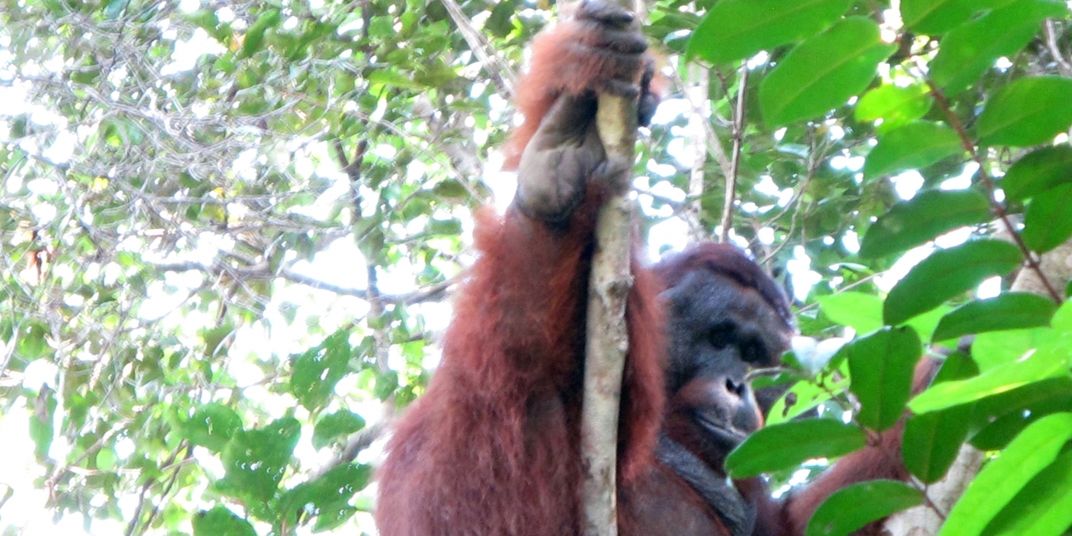
What was your favorite memory from the trip?
Bastian: I have many happy memories from this trip, but my very favorite memory took place early one morning when we were waiting for orangutan Kerry and her son, Ketambe, to wake and leave their nest. We were at Tuanan at the start of the dry season, so most of the swamp was dry enough for us to lay down while waiting for the orangutans to emerge from their nest and start their (and our) day. Listening to the forest wake up—starting with the loud chirping of the cicadas and the singing of the gibbons—all while the forest is still completely dark—has always been one of my very favorite things about following wild orangutans.
Reddy: My favorite memory from this trip was seeing an orangutan (which translates to mean "person of the forest") for the first time in the wild. On my first full day in the forest, our guides took us to the nest of an adult flanged male orangutan named Whisky. You can typically tell male and female orangutans apart by looking at them. Males and females have flabby throat sacs, which become very large in adult males. Adult males have deep chests and much longer body hair than females do. Males also typically develop large cheek pads, which demonstrate genetic fitness and amplify their long calls.
Orangutans often arise before the sun comes up. In the dark of the night, we witnessed Whisky wake up from his well-crafted nest. They typically build sleeping nests above the ground in various positions of one or more trees. They usually build and sleep in a fresh nest each night, but they will sometimes re-enter or rebuild an older nest. They will also sometimes nap in a less carefully constructed day nest. Like most animals, the first thing he did when he awoke was defecate and urinate. The assistants worked to catch the samples for research purposes, which is no easy task! We watched Whiskey eat and travel throughout the day. He consumed many species of plants, including liana (a vine), kamunda seeds, young leaves of manggis hutan (Garcina sp.) and ants.
At 3:16 p.m., Whiskey started to make his night nest. It was a joy to watch him fold leaves into comfortable bedding. I reflected on how I have observed our orangutans build their night nests countless times. The follow—and trekking through the mud—was exhausting, yet totally worth it. I will always reflect fondly upon my first time seeing orangutans in the wild. Watching this impressive orangutan was undoubtely one of my most treasured moments from this trip.
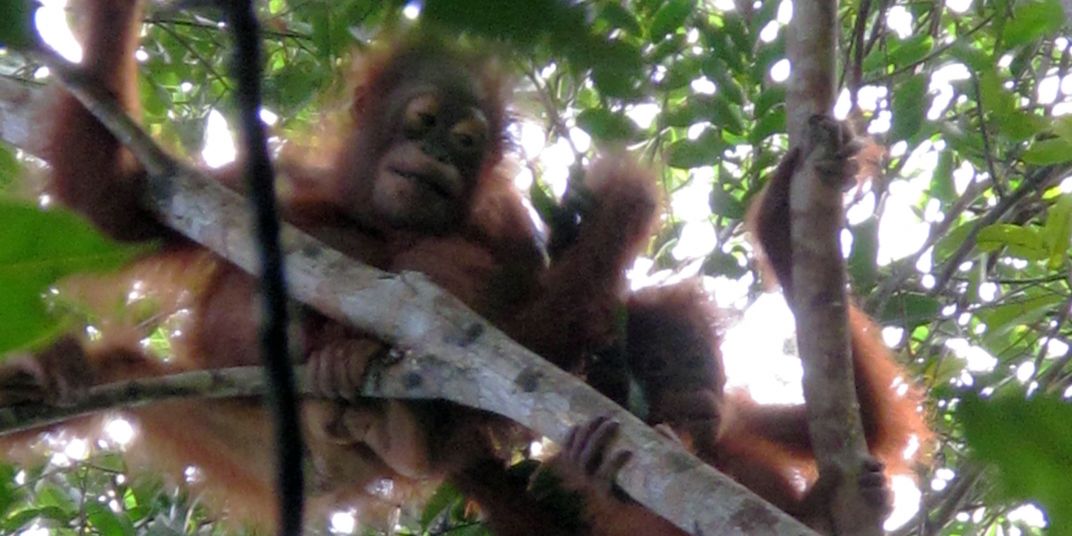
What was a typical day like?
Reddy: Mornings at camp, I awoke to the enchanting sounds of gibbons, beautiful birds and cicadas outside my window. There is no sound like it on Earth, and one I will never forget.
Each day was different. On days where we followed orangutans, we woke up around 3:30 a.m. and made the journey to the swamp to wait for the orangutans to wake up from their night nests and start their day. We followed these orangutans throughout the day from their morning nest until they made a night nest.
What orangutans did you meet?
Reddy: We followed Whisky (an adult flanged male), Kerry (an adult female) and her son Ketambe, and Milo (an adult female) and her daughter Merkur. I had the privilege of observing a group of four orangutans—known as a party—come together to feed. This included Milo and Merkur, as well as her grown daughter Mindy and her new offspring, Moby. A party occurs when two or more independently ranging/nesting orangutans come together within 50 meters of each other.
Orangutans usually have a single baby, and twins are rare. Gestation is seven-and-a-half to eight-and-a-half months. From birth, orangutan infants cling to their mothers as they maneuver through the trees. The orangutan has the longest period of dependence on the mother of any other land-dwelling animal, including humans. Infant orangutans can nurse until they are six to seven years old.
The juveniles had an exciting play bout for more than an hour, and it was thrilling to observe them and contemplate their forest navigation skills, social networking and survival strategies. They ate a variety of foods, but the highlight was when Milo ate some termites off of a very large branch that she held in her hand and munched on in the evening. She made her night nest around 4 p.m., and we waited around for her playful daughter to join her in the nest as well.
We heard the long calls of many adult male orangutans when we were at base camp and when we were in the forest. We always maintain a distance of at least 10 meters with all wild orangutans. Since the orangutans we followed during this trip were all well habituated to the presence of human observers, we were able to follow just beneath them.
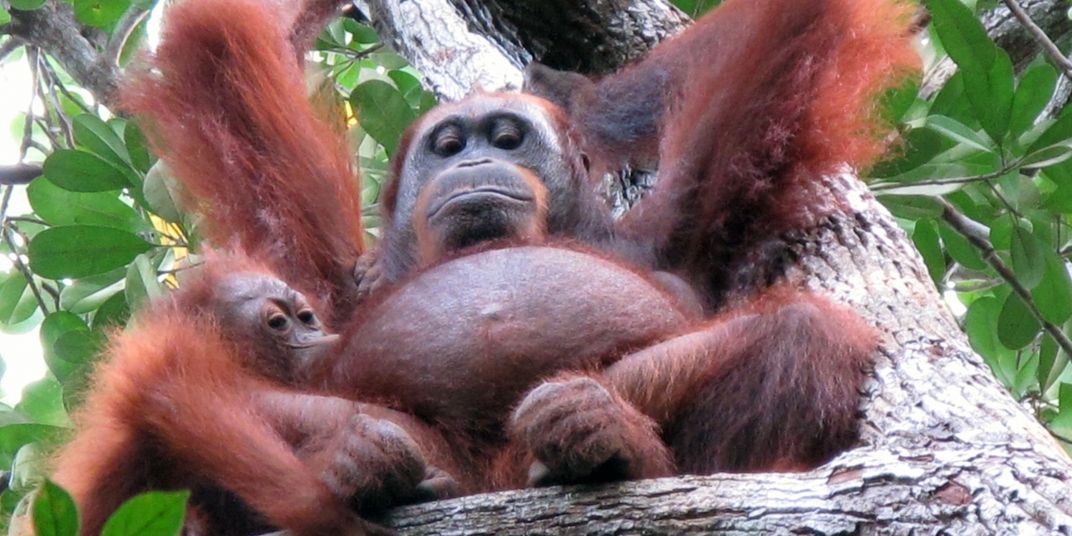
What was it like to see some of the orangutans you have studied years later?
Bastian: After a day of following Milo and her daughter, Merkur, I was very excited to hear that Alex and the others were in a bit of forest just off the boardwalk leading to the front of camp following Kerry and her son, Ketambe, who had just appeared to their night nest. In 2003, I found and named Kerry and her daughter, Kondor. Since then, Kondor has have three offspring of her own, but only her current offspring, Ketchup, has survived. Kerry has had more success as a mother, and it was a real treat to follow her along with her current dependent son, Ketambe. Milo was an infant when she and her mother were first discovered during my first trip to Tuanan in 2003.
On the same day I found Kerry and Kondor, I discovered the first male orangutan at Tuanan—a big flanged orangutan whom I named Niko after my cat. Although he is now what we consider a “past-prime” male, Niko is still followed regularly at Tuanan and often visits camp, frequently coming down to the ground.
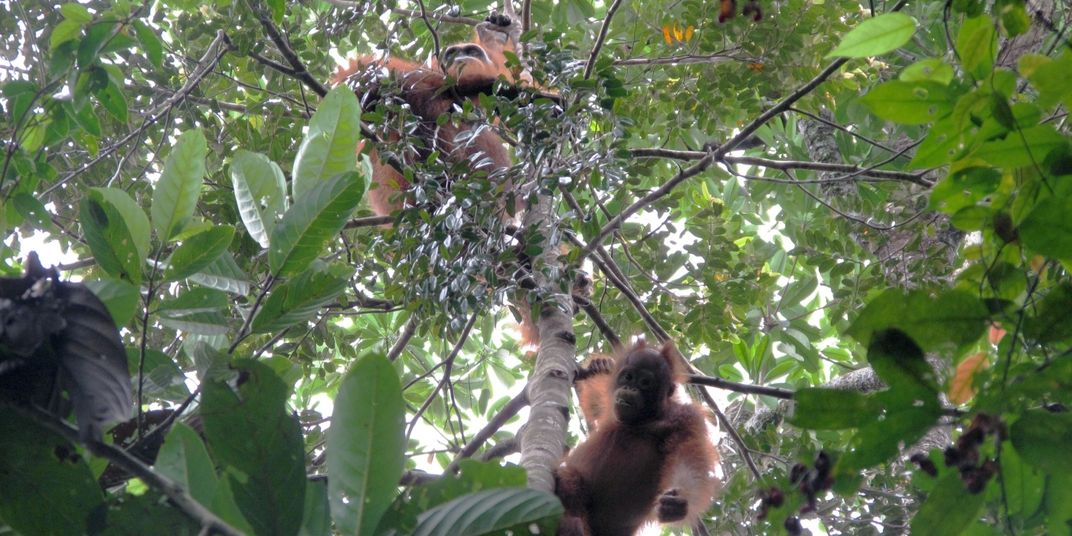
Did they recognize you?
Bastian: I would like to think that Milo, Mindy and Kerry—all of whom I have spent countless hours following over the years—recognized me. Zoo-housed orangutans clearly recognize people they were once familiar with, even if they haven't seen them in years. However, it is much harder to tell for certain whether wild orangutans have this recognition since we purposefully maintain a distance of at least 10 meters, even from the most habituated wild orangutans. Nevertheless, there were moments when I noticed all three of these orangutans look down at me in a way that certainly gave me the feeling that there was recognition.
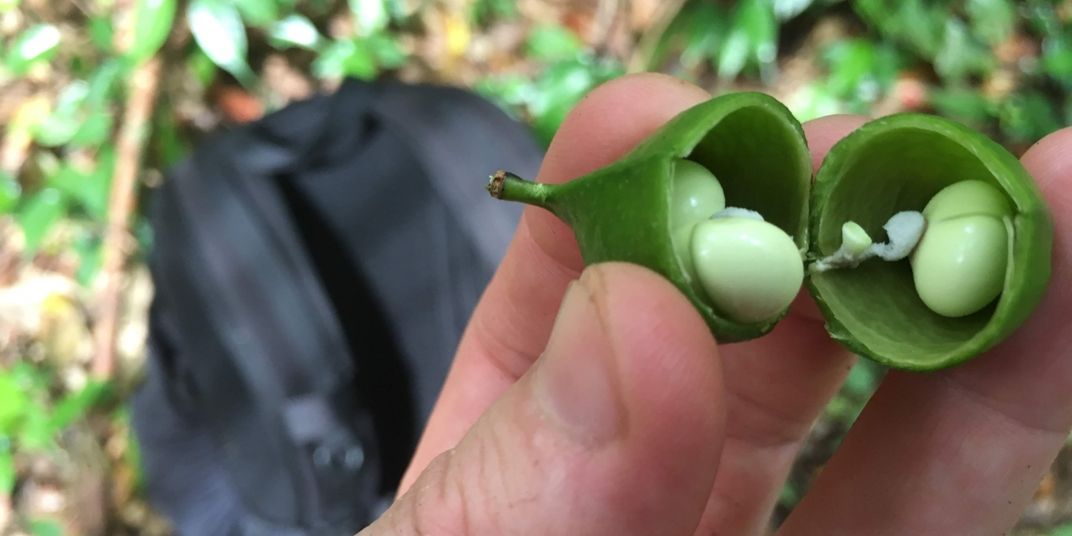
What did observing wild orangutans teach you about their Zoo counterparts?
Reddy: Our orangutans at the Zoo are incredibly intelligent, and I gained a stronger understanding of the need for this adaptation. Orangutans must know what is safe to eat, how to navigate their environment and, generally, how to survive. They undoubtedly have a great deal of knowledge about their forest home!
Researchers at Tuanan currently focus a great deal on orangutan nutrition ecology, so I learned a bit about their diet. The diversity of plants that orangutans consume in the wild was surprising—there are hundreds of species for them to choose from, although they are not all ripe for eating year-round. A plant called liana, which looks like peas in a pod, was a common selection. Orangutans break them open and eat the tiny white seeds inside. I took a taste of it, and the flavor resembled a bland pea. I asked the researchers if the orangutans had ever consumed anything unusual, and it was interesting to learn that some had observed the apes eating other primate species.
Orangutans live in variable environments, and at times, food is scare. Orangutans eat primarily fruit and play an important role dispersing seeds through defecation. Although they spend a majority of their total foraging time feeding on fruits whenever they are available, orangutans also eat insects and flowers, and during times of fruit scarcity, fall back on a variety of other types of food, including inner bark, leaves and other vegetation. Orangutans have also been observed eating mineral-rich soil, bird eggs and, occasionally, small mammals such as rats and slow lorises. Orangutans get water from a variety of sources, including tree holes and leaves that fill with water during the rainy season.
At the Smithsonian’s National Zoo, it has been fascinating to observe Redd, our 3-year-old juvenile orangutan, and how his eating habits have developed over the years. Young orangutans must learn about hundreds of varieties of fruit, where to find them seasonally and how to open them. I have seem him observe mom Batang's eating habitats, and, at times, have witnessed her sharing food with him. Other times, she takes food away from him. This definitely resembled some parenting I was able to observe in the orangutans at Tuanan.
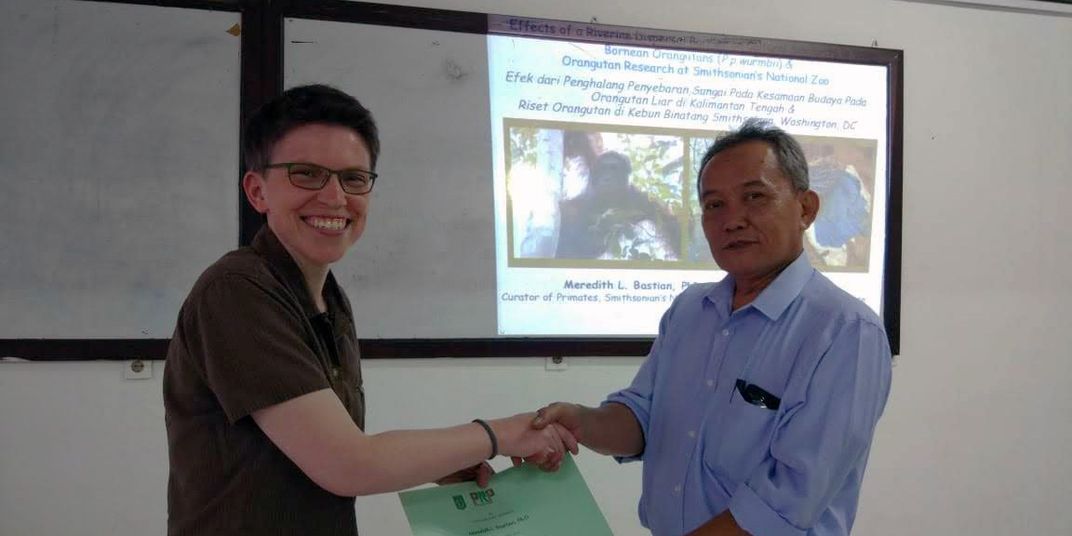
Did you share any information about orangutans with the team at Tuanan?
Bastian: A great deal of information exchange about orangutans occurred throughout our trip.
On our first day in Indonesia, I gave a lecture about the results of my Ph.D fieldwork with wild orangutans conducted at Tuanan and Sungai Lading. I also spoke about the Smithsonian’s National Zoo’s research with orangutans to Fakultas Biologi students and professors at Universitas Nasional (UNAS), our Indonesian counterpart organization in Jakarta.
Once at camp in the Tuanan forest, we talked daily with field assistants and researchers (students and volunteers) about orangutans. I shared photos I took in the early days at Tuanan and at Sungai Lading—the site I established and conducted research in from 2005 to 2007.
We also discussed the evolution of data collection methods over the years at Tuanan, the histories of individual orangutans, and how their forest habitat has changed and grown since research first began at that site in 2003.
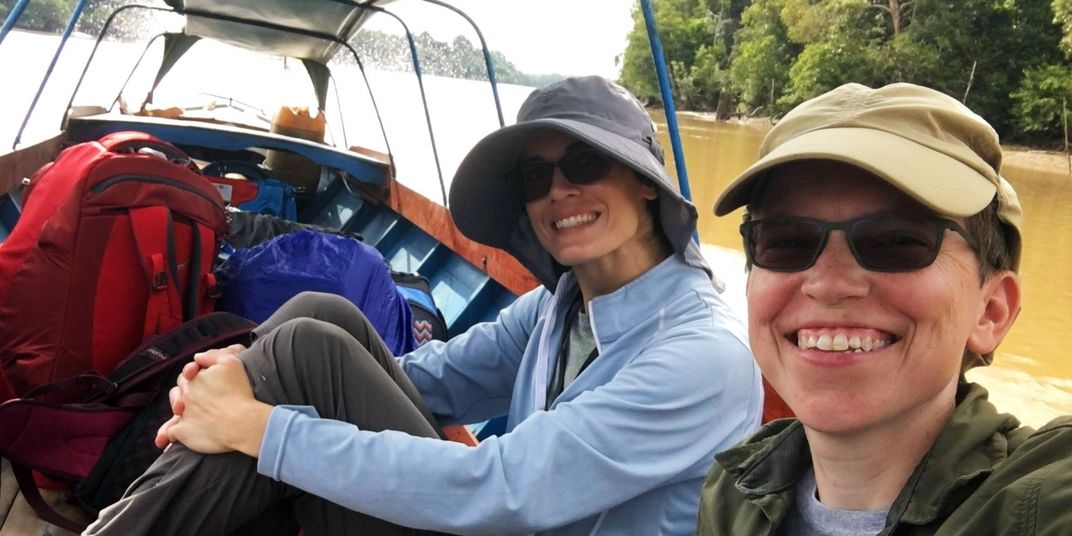
Meredith, for you, this was a ‘homecoming’ of sorts. What was that like?
Bastian: Returning to Tuanan and visiting the area where the Sungai Lading forest and my base camp once stood was very much a homecoming for me. Seeing the current state of the Sungai Lading area was difficult and very sad to see. However, equally encouraging was to see how much the Tuanan forest has grown over the years.
Pak Nadi, one of the very first field assistants at Tuanan, now operates the site’s boat. Three of my field assistants from Sungai Lading are now working at Tuanan. Seeing them and their families was like returning to my second family.
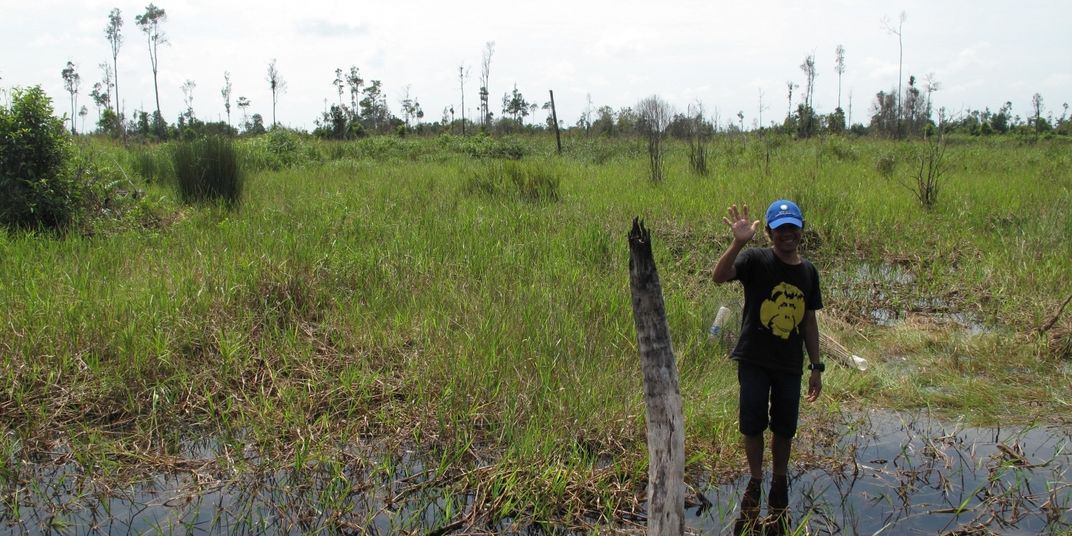
How were the sites similar or different to what you remember?
Bastian: At Tuanan, the research site’s transect system has expanded greatly. It is now well over 1,000 hectares. There are now more than 80 individually identified orangutans compared to about 45 in 2007. It was amazing to see how much the forest has grown over the years, especially the forest just across from—and on the foot path leading to—the Tuanan research station, which I witnessed being burned in 2003 and is now once again capable of supporting orangutans, thanks to the long-term presence of researchers at the site.
The 200 hectare short-term satellite site that I established in 2005, Sungai Lading, was first burned in 2010 and again in 2015. This was my first time back to the area since 2007, and I returned with one of my field assistants from Sungai Lading and another Indonesian friend from the nearby village of Pasir Putih. It was devastating to see for myself that the entire research area is now completely gone. The difference between the thriving forest at Tuanan and the now non-existent forest just over an hour away by boat on the other side of the Kapuas River is jarring, but also reinforces the importance of sustained research presence on the successful conservation of wild orangutans.
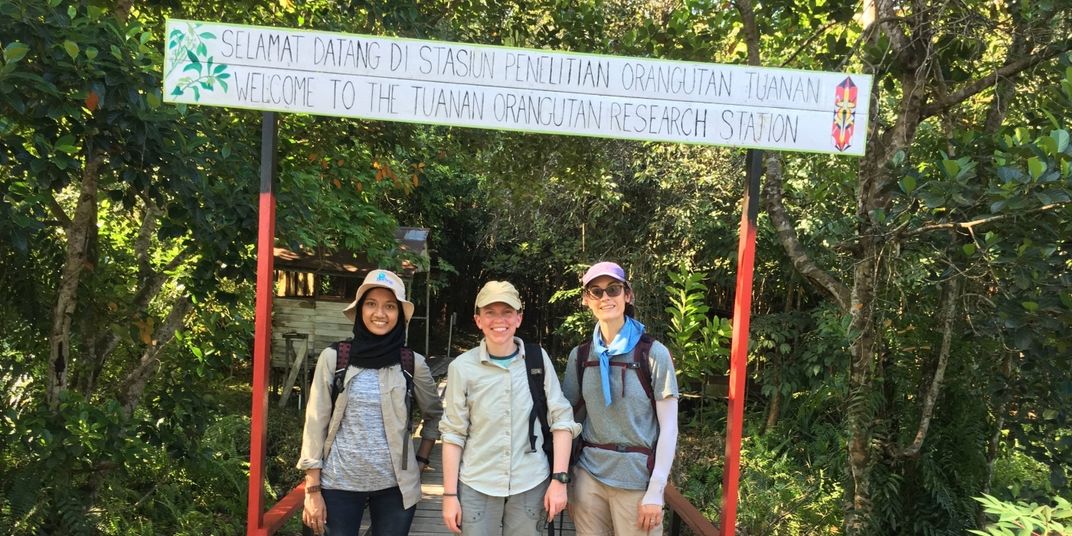
Was there a moment when you learned something new or surprising about orangutans?
Reddy: I went on this trip prepared to see orangutans. Of course, as a primate keeper, they were the highlight for me. However, I was absolutely blown away by the biodiversity at Tuanan. We saw such a great variety of species, from butterflies, monitor lizards and sun bears to long-tailed macaques, white-bearded gibbons and even a clouded leopard! Even the plant life was amazing. Pitcher plants filled with water droplets and leaves that orangutans sometimes wore as hats are images forever engrained in my memory.I also learned how fragile this ecosystem really is. Just over a month after we returned home to Washington, D.C., I was saddened to learn that the project team I was privileged to meet as well as local community members are banding together to fight a fire in the same forest we were just in. I learned that since 2015, over 80 hydrants have been installed in Tuanan and the surrounding study area, as fires are a big concern there.
The fires are still burning, and new fires have been detected along the south of the study area, but the team is making progress and putting out the major flames. There is a lot of smoldering peat but they feel positive that they can get this fire under control.
Since this is just the start of the fire season, I will be keeping a close eye on news from Tuanan and the needs of CORE Borneo, which supports work in the area. This region, like so many other forests across the globe, is experiencing forest fires as a result of climate change and human activity.
My experience in the forest left me with a deep sense of wonder and humility and increased my desire to advocate for conservation of the remaining biodiversity on our planet.
Meredith Bastian and Alex Reddy would like to extend a special thank you to: Suci Utami Atmoko, Ph.D., Tatang Mitra Setia and Sugarjito, Ph.D. of the Universitas Nasional, Jakarta; Erin Vogel, Ph.D. of Rutgers, the State University of New Jersey; and Tuanan Orangutan Research Station.
Want to learn more about orangutans? Don’t miss the daily 11:30 a.m. talk at Think Tank and a special research presentation every Tuesday at 1:30 p.m. through Dec. 10.

